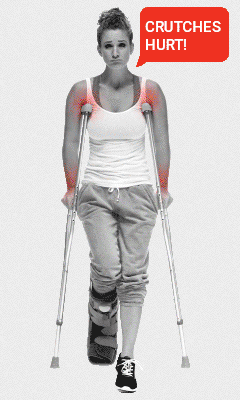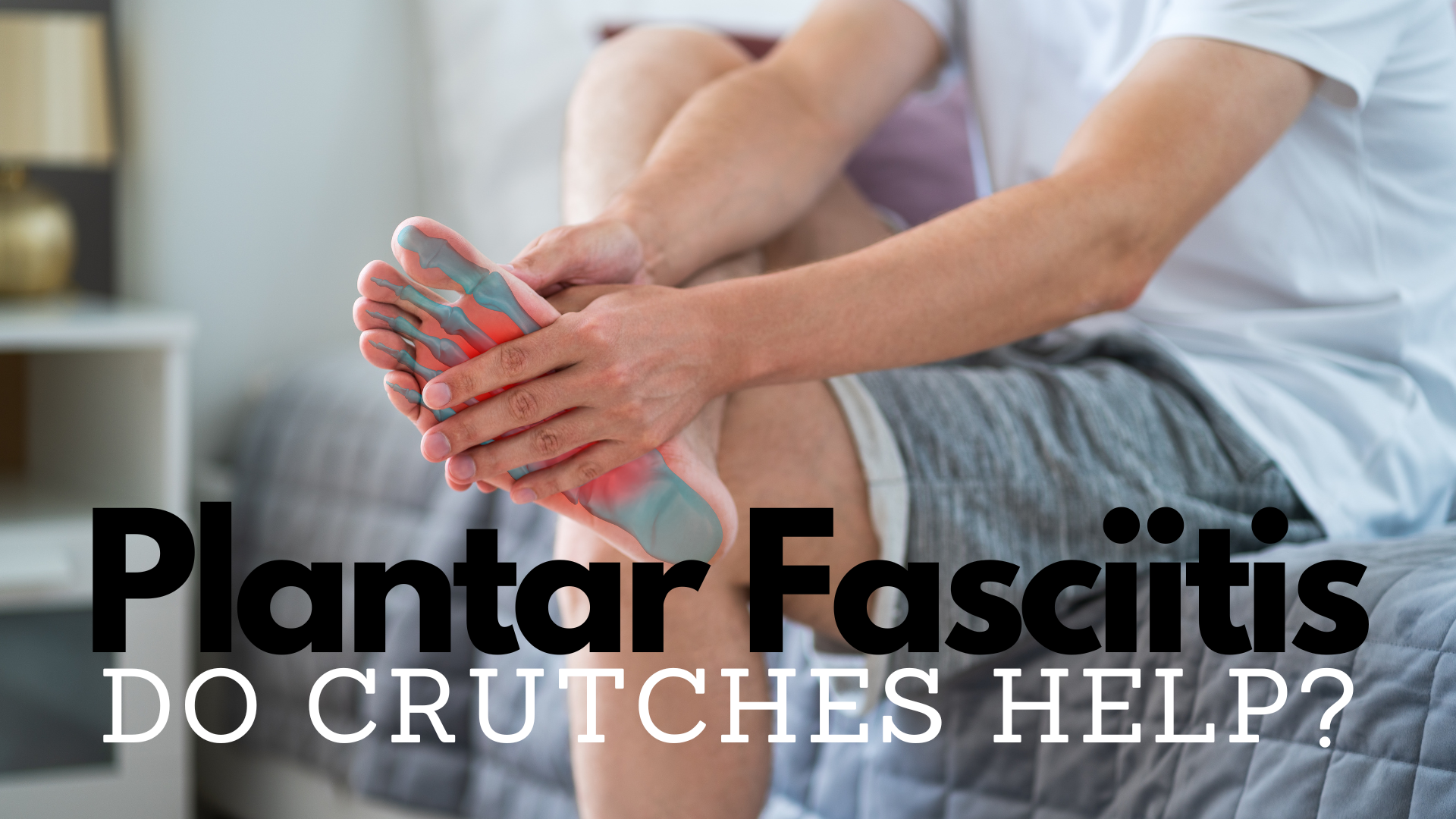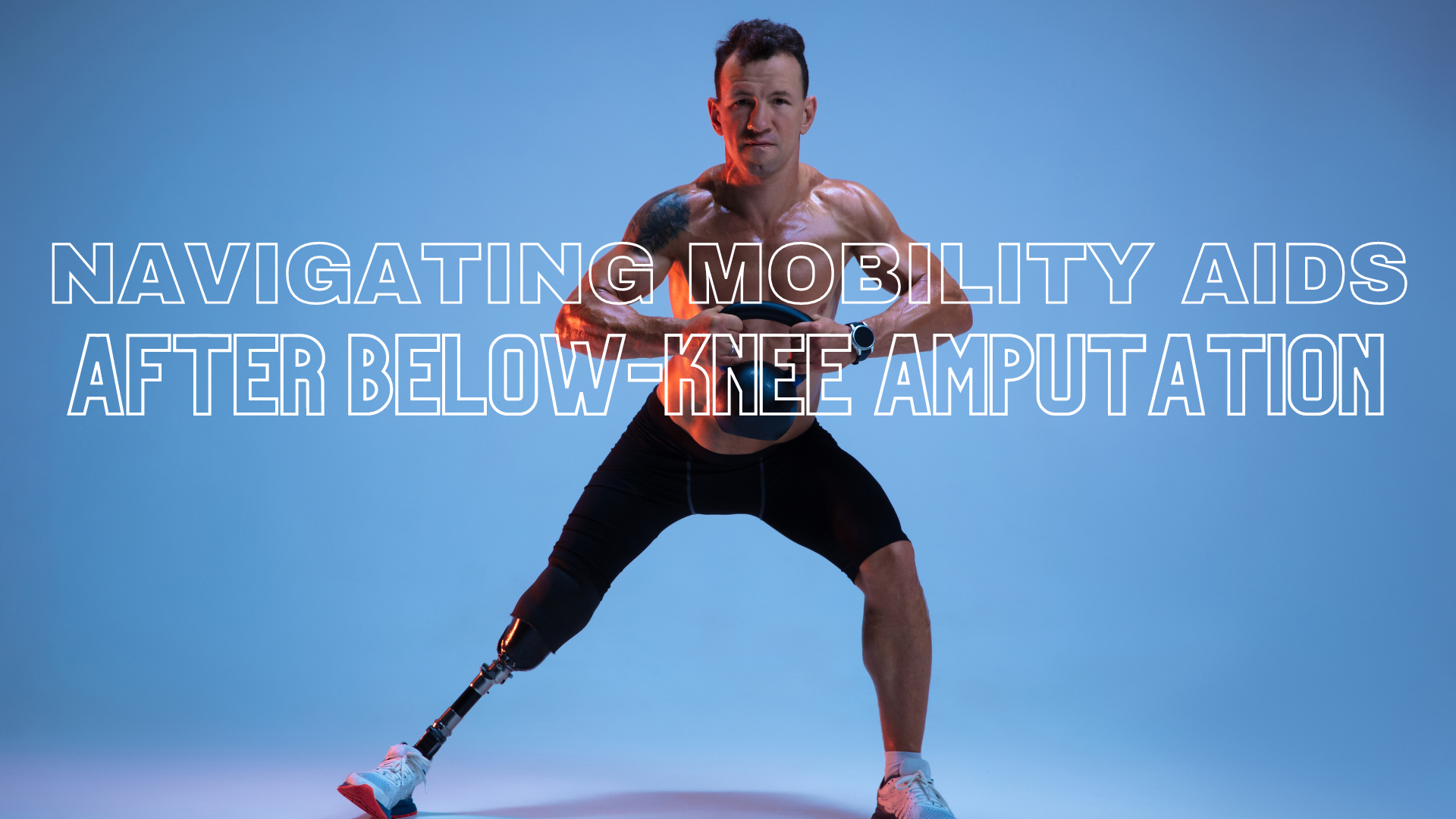The Type of Mobility Device You Choose Can Make All the Difference When It Comes to Living Your Life With Mobility Challenges
It’s no secret—crutches suck. They’re painful and inconvenient, and no one wants to use them for long.
If you’re stuck using crutches, you may have asked yourself, “can I use a cane instead of crutches?”
Like the answer to many of life’s great questions—it depends. Some situations make a cane the optimal choice for a walking aid and other situations are better suited for crutches or crutch alternatives like the iWALK2.0. The type of mobility device you choose can make all the difference when it comes to living your life with mobility challenges.
How to Choose the Right Walking Aid
The type of walking aid you should use depends on your situation and purpose. Some walking and mobility aids are used to keep weight off of injuries while others are designed to provide assistance with balance or to reduce fatigue from walking. Some of the main types of mobility devices include crutches, canes, knee scooters, and hands-free crutches like the iWALK2.0.
Incorrectly using your walking device or choosing the wrong device is painful and can lead to further complications. Make sure your walking aid or mobility device is properly adjusted to your height and use the walking aid recommended by your doctor. If you’re unsure of how to use your walking aid, ask your doctor or physical therapist to teach you how.
When to Use a Cane and When to Not
If you’ve wondered, “Can I use a cane instead of crutches,” the best place to start is to understand when it is appropriate to use a cane and when it is not appropriate. Canes have a lot of uses, but their primary purpose is to alleviate pain and help you be more steady on your feet. Canes are often used by individuals suffering from chronic issues such as arthritis and can also aid in injury recovery. Whether you are old or young, canes were designed to help you with basic mobility such as balance, walking up and down stairs, relieving joint pressure and pain, and making it easier to walk further throughout your day.
In some cases, a cane is not a suitable mobility device and isn’t safe for you to use. Canes are inadvisable if you have an injury that requires you to not put any weight or pressure on the affected foot or leg. This could be due to a broken bone or during recovery from foot or leg surgery. Follow the advice of your doctor as to when you can put light pressure on your foot or leg. You may even switch to a cane during the recovery process as you heal. If you don’t want the hassle of switching between mobility devices and find crutches to be painful, a hands-free crutch such as the iWALK2.0 is a great alternative depending on your condition.
Using Your Cane Instead of Crutches
There is a proper and improper way to use your cane. If you’ve ever watched the TV show House, you may have noticed Dr. House leaning heavily into his cane for support—on the same side as his injury. TV shows aren’t particularly reliable for medical advice and this is not the correct way to hold your cane if you need additional support. Instead, hold your cane in your opposite hand from your injury and move your hand naturally with your stride. Your cane should hit the ground as your weak side steps forward.
For example, if your left leg is injured or needs additional support, hold your cane in your right hand and bring it down when your left leg hits the ground. Using your cane this way provides support and balance and relieves pressure on your injury or weakness. Don’t worry if it takes some time to get used to. Practicing with your cane will help you feel comfortable and will allow you greater mobility in your daily life.
Depending on where you need additional support, a hands-free crutch like the iWALK2.0 can give you the combined support of a crutch with the mobility of a cane. Injuries below the knee are suitable for hands-free crutches, whereas a cane would be more appropriate for permanent leg injuries and above-the-knee or hip-related issues.
Using Your Crutches Correctly
Crutches are painful, and more so if they are improperly used or fitted for you. Using crutches is best if you need to keep weight completely off of an injured foot or leg. When using your crutches, stand with your crutches under your arms and the feet of the crutches just slightly in front of your own. When you stand upright, your crutches should hit 1-2 inches below your armpits. This will give you enough room to move around on your crutches.
Improperly adjusted hand grips also cause pain and even nerve damage if they cause you to place too much weight on your armpits. Adjust your handgrip so they are level with your hips. This should allow for a slight bend in your elbow when holding your crutches for support. You can avoid crutch pain entirely by opting for a hands-free mobility device that won’t put unnecessary pressure and pain on your hands and armpits.
Cane Alternatives
To avoid the inconvenience and pain of traditional crutches, you may consider other mobility options like forearm crutches, knee scooters, or completely hands-free options like the iWALK2.0.
Forearm Crutches
These crutches are often used as an alternative to traditional crutches because they reduce pain in your armpits while using them. However, they still place significant pressure on your forearms and place more weight on your hands than traditional crutches. They also don’t allow for hands-free mobility during recovery. Want to pick up that cup of coffee? Unless it’s in a spill proof cup, you’re out of luck.
Knee Scooters
These are popular because they allow you to get from one place to another fairly smoothly. Think of it like a skateboard for your knee. The main drawbacks are that you will not be able to traverse stairs or uneven ground with a knee scooter and they are not entirely hands-free.
Hands-Free Crutches
These are often referred to as a “pirate leg crutch.” They allow for full mobility and are a hands-free option that will keep weight off your leg while in recovery. However, they are best used for injuries below the knee as they require the knee to provide support for your leg. The iWALK2.0 is a great option for individuals who meet these requirements and hey, you can even carry your coffee while you use your hands-free crutch!
Get Your Life Back
The answer to, “Can I use a cane instead of crutches?” really depends on what you need your walking aid to do for you. Crutches are used for keeping all your weight off a foot or leg and a cane is used for balance and mobility assistance. The right mobility device or walking aid can really make a difference in your quality of life and help you recover from temporary injuries faster. Don’t let limited mobility stop you from living your life.
You Might Also Like:
‘Hands-Free Crutch Is a Valuable Tool for Gardeners’
A hands-free crutch has enabled Geoff Stonebanks, gardening columnist, to get back out into the garden and has now become an essential addition to his tool bag.
Crutch Substitute Proves Anything Is Possible
Many people assume that they won’t be able to go on vacation after an injury but that’s not always the case. Not only was Rip able to go on vacation with his family, he even managed to get some time on the slopes.









